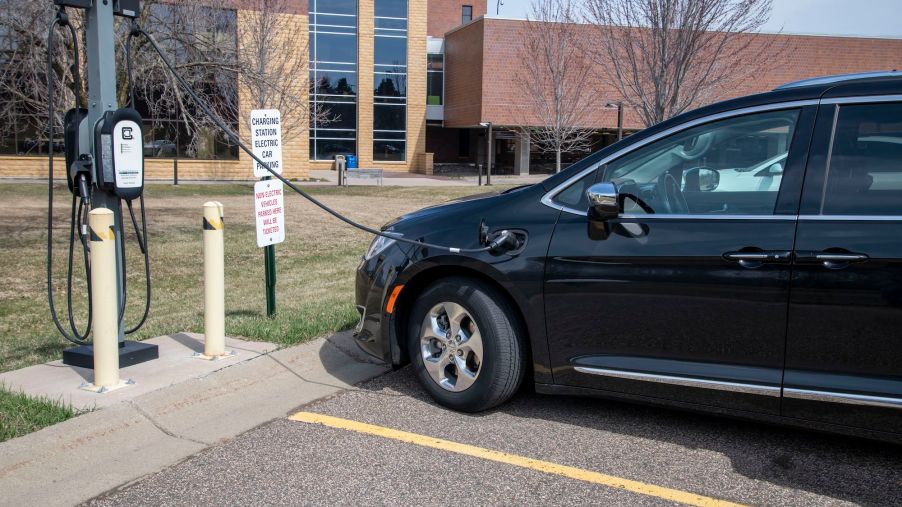
The Midwest Presents a Problem in the Plan to Expand EV Charging Nationwide
Vehicles have evolved much since the Duryea Motor Wagon made its first public run on September 21, 1893. For well over a century, combustion engines have powered the automotive industry. But as EVs grow in popularity, significant changes to our transportation infrastructure are on the horizon, whether we like it or not.
Nationwide EV charging is crucial to Biden’s infrastructure agenda
President Joe Biden has pledged to allocate $174 billion toward making it easier for Americans to opt for EVs when looking to purchase a vehicle, Car and Driver reported. Of that money, the president plans to use $15 billion on expanding the nation’s EV charging station network by a half-million stations by 2030. In support of Biden’s plan, Reps. Alexandria Ocasio-Cortez (D-NY 14th District) and Andy Levin (D-MI 9th District) issued a statement the next day saying they had amended their existing bill on EV infrastructure to align with the president’s new proposal.
Of course, in such a polarized political environment, plenty of Republicans — many of which have vowed to go against anything and everything the Biden administration tries to accomplish — oppose the EV charging station expansion. For example, Rep. Cathy McMorris Rodgers (R-WA 5th District) claimed Biden’s proposal is a “‘mandatory rush’ toward EVs,” Car and Driver reported. However, this is far from the case — Biden declined to support a California proposal banning the sales of combustion engine vehicles by 2035.
Huge gaps in EV charging infrastructure in the Midwest
Here’s the thing about the government allowing private companies to primarily be in charge of building out North America’s EV charging station network: companies will go where the money is. What does that mean for the nation as a whole? Well, we’re already seeing the consequences of allowing profit-driven enterprises to establish the beginning of a charging station network. It goes without saying they build EV charging stations in mostly urban areas because those are where most people purchase EVs.
“Whether or not Biden’s plan can weather the slings and arrows of a bitterly divided Congress, an EV charging network is popping up across the country, driven by efforts from private companies and various government initiatives,” Car and Driver reported. “But where will all those chargers go?”
While Congress continues debating Biden’s proposal, regional government initiatives and private companies continue to build onto the national EV charging station network. “But the charging stations get built mainly in more populous areas, causing gaps that will be a problem going forward,” C/D pointed out.
For proof that some of the biggest network providers, such as Electrify America and ChargePoint, have so far focused on putting chargers where lots of people (and EVs) already go, look at the maps of charging stations in the United States. As one can see, depending upon the station provider, significant gaps exist in the heartland, notably in the upper Midwest and through the Rockies.
A digital map is exactly how London, England, is building out its EV charging network before its 2033 deadline mandating a zero-emissions taxi fleet. London began building a fast-charging network using electrical grid capacity data and GPS information from current taxi trip patterns.
Plenty of other developed countries are leaving us in the dust
China is one of the most popular catchwords the media uses when someone wants to prove how great America is — or prove how vulnerable it is. However, in terms of greatness (and vulnerability), the United States is far behind countries such as China in one of the most critical areas: a national EV infrastructure. In today’s politically charged environment full of hyperbolic rhetoric, many Americans have significantly underestimated how far ahead other nations are in terms of electrified transportation infrastructure.
Thus far, the countries clearly leading the way in EV infrastructure include Norway, with the most electric cars per inhabitant; Japan, which is on the cutting edge of hybrid technology; South Korea, with the most fast-charging stations; China, with the most EVs available through carsharing services; and France, where electric cars have the most potential.


